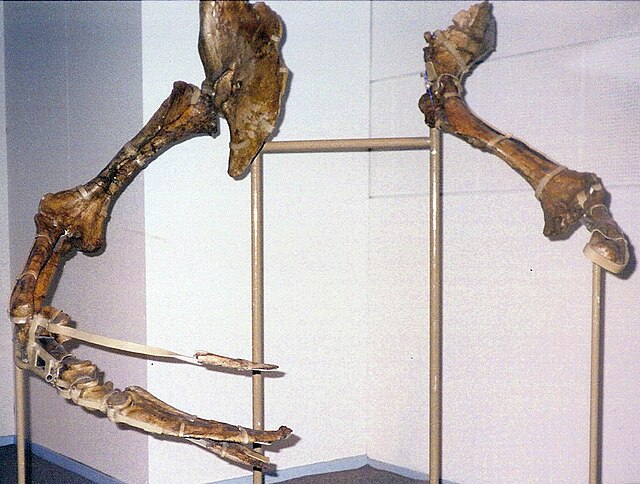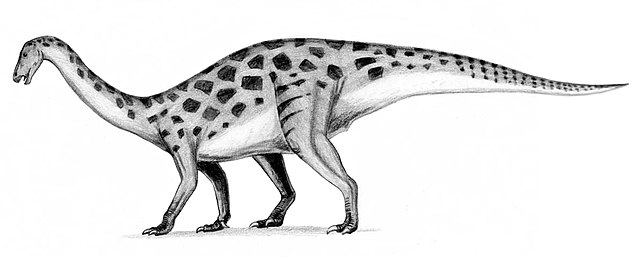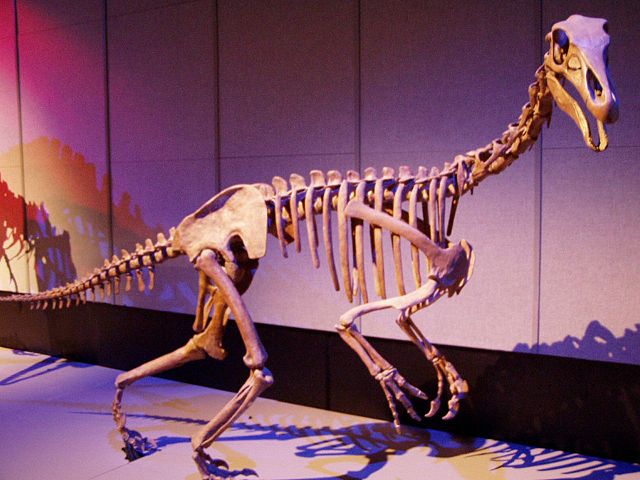Therizinosauridae is an extinct family of derived (advanced) therizinosauroid dinosaurs whose fossil remains have been found in mostly Late Cretaceous boundary. Even though representative fossils have only been found throughout Asia and North America, the range of Therizinosauridae is believed to have spanned much of the supercontinent of Laurasia based on several footprints and isolated remains in Europe and Africa. Currently, Therizinosauridae comprises eight described and named taxa.
Therizinosauridae
Holotype claw cast of Therizinosaurus (PIN 551–483)
Frontal view of the arms in Therizinosaurus IGM 100/15
Skeletal composite of two specimens of Alxasaurus
Therizinosaurs are an extinct group of large herbivorous theropod dinosaurs whose fossils have been found across the Middle Jurassic to Late Cretaceous deposits in Europe, Asia and North America. Various features of the forelimbs, skull and pelvis unite these finds as both theropods and maniraptorans, making them relatives of birds. The name of the representative genus, Therizinosaurus, is derived from the Greek θερίζω and σαῦρος. The older representative, Segnosaurus, is derived from the Latin sēgnis ('slow') and the Greek σαῦρος.
Therizinosauria
Forelimbs of Therizinosaurus, specimen IGM 100/15 displayed at Nagoya City Science Museum
Outdated restoration of a plateosaurid-like, quadrupedal Erlikosaurus. Therizinosaurs were often depicted this way until they were definitively identified as theropods
Reconstructed skeleton of Alxasaurus from China, the completeness of which confirmed therizinosaurs as theropods in 1993








